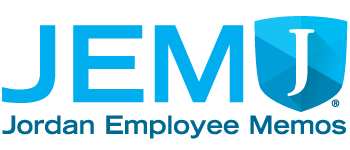Cybersecurity is something we all need to be aware of throughout the year and Cybersecurity Awareness Month is a good time to reflect on everyone’s role regarding internet safety and security. Any employee can be a target, and cybercrime is more common than you might think.
Here are a few things to keep in mind:
Get to Know Phishing Email Red Flags
Ever get an email that just seemed off? An invitation to click on a link from a stranger or an odd request from a usually trustworthy source? Chances are these are cybercriminals attempting to manipulate, influence or deceive you into taking some action that isn’t in your own best interest or in the best interest of Jordan School District. Watch out for the following:
- An email coming from an unknown address is a red flag. If you know the sender (or the organization) but the email is unexpected or out of character, it’s a red flag. Also, pay attention to the “Reply-To:” address. If it doesn’t match the “From:” address, that’s a red flag.
- If you receive an email that you would usually get during normal business hours, but it was sent outside of normal business hours, this is a red flag.
- Any attachment you receive that you aren’t expecting or doesn’t make sense in relation to the rest of the message is a red flag. Attachments that want to “enable external access” or have you enter in your username and password before opening are red flags.
- Being asked to take some action to avoid a negative consequence is a favorite trick of hackers. So, if the sender is asking you to click on a link or open an attachment, be on alert—especially if the request is made with a sense of urgency.
- Look for misspellings in the link — for example, Arnazon instead of Amazon. Anytime you see a link that contains misspellings to make it look like a real link, that’s a red flag. Hover your mouse over the hyperlink. If the link address is for a different website, this is a BIG red flag.
Ransomware
What is ransomware and how can I protect the District from ransomware?
- Ransomware is a type of malicious software that takes over your computer and prevents you from accessing files until you pay a ransom.
- Although Information Systems maintains controls to help protect our networks and computers from this type of attack, we also rely on you to be our first line of defense.
- The most common way ransomware enters corporate networks is through email. Often, scammers will include malicious links or attachments in emails that look harmless. To avoid this trap, here are some simple things you can do:
- Do not click on links or attachments from senders you do not recognize. Be especially wary of .zip or other compressed or application file types.
- Do not provide sensitive personal information (like usernames and passwords or student data) if requested in an email.
- Watch for email senders that use suspicious or misleading web addresses.
- If you can’t tell if an email is legitimate or not, please share it with your school technician or forward it to security@jordandistrict.org.
- Be especially cautious when opening attachments or clicking links if you receive an email containing a warning banner indicating that it originated from an external source.
If your computer is infected with ransomware, you will typically be locked out of all programs and a “ransom screen” will appear. In the unfortunate event that you click a link or attachment that you suspect is malware or ransomware, please notify Information Systems immediately.
To contact Information Systems, please speak with your school technician or call the Help Desk at 801-567-8737. Thanks for helping to keep our network and employees safe from potential cyber threats. Please let us know if you have any questions.
